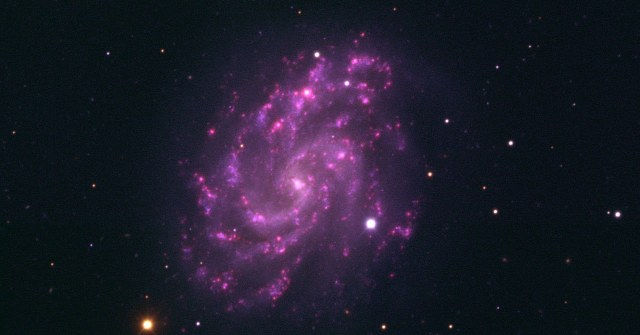Does Dark Energy Really Exist? Cosmologists Battle It Out
- Shiva Cloud Security Fr

- 5 janv. 2020
- 3 min de lecture

In their recent paper, Sarkar and collaborators took an unconventional approach to the analysis. Normally, any study of supernova data has to account for Earth’s movement: As Earth orbits the sun, which orbits the galaxy, which orbits the local group of galaxies, we and our telescopes hurtle through space at around 600 kilometers per second. Our net motion is toward a dense region near Centaurus. Consequently, light coming from that direction is subject to the Doppler shift, which makes it look bluer than the light from the opposite side of the sky.
It’s standard to correct for this motion and to transform supernova data into a stationary reference frame. But Sarkar and company did not. “If you don’t subtract that [motion], then it puts the same Doppler shift into the supernova data,” Rubin explained in an interview. “Our claim is that most of the effect is due to the solar system’s motion.”
Another problem with the paper, according to Rubin and Heitlauf, is that Sarkar and colleagues made a “plainly incorrect assumption”: They failed to account for the fact that cosmic dust absorbs more blue light than red.
Because of this, a supernova in a relatively “clean,” dust-free region looks especially blue, since there’s less dust that would otherwise absorb its blue light. The lack of dust also means that it will appear brighter. Thus, the faraway supernovas we spot with our telescopes are disproportionately blue and bright. If you don’t control for the color-dependent effect of dust, you will infer less difference between the brightness of nearby supernovas (on average, dustier and redder) and faraway supernovas (on average, bluer and brighter)—and as a result, you will infer less cosmic acceleration.
The combination of these and other unusual decisions allowed Sarkar’s group to model their supernova data with a “dipole” term, an acceleration that points in a single direction, and only a small, or possibly zero, “monopole” term describing the kind of uniform acceleration that signifies dark energy.
This dipole model has two other problems, said Rubin and Heitlauf. First, the model includes a term that says how quickly the dipole acceleration drops to zero as you move away from Earth; Sarkar and company made this distance small, which means that their model isn’t tested by a large sampling of supernovas. And second, the model doesn’t satisfy a consistency check involving the relationship between the dipole and monopole terms in the equations.
Not All the Same
The day Rubin and Heitlauf’s paper appeared, Sarkar said by email, “We do not think any revisions need to be made to our analysis.” He and his team soon posted their rebuttal of the duo’s four points, mostly rehashing earlier justifications. They cited research by Natallia Karpenka, a cosmologist who has left academia for a career in finance, to support one of their choices, but they misconstrued her work, Rubin said. Four other cosmologists contacted by Quanta said the group’s response doesn’t change their view.
Those who find the back-and-forth about data analysis hard to follow should note that the data from supernovas matches other evidence of cosmic acceleration. Over the years, dark energy has been inferred from the ancient light called the cosmic microwave background, fluctuations in the density of the universe called baryon acoustic oscillations, the gravitationally distorted shapes of galaxies, and the clustering of matter in the universe.
Sarkar and colleagues ground their work in a respectable body of research on the “cosmological fitting problem.” Calculations of cosmological parameters like the density of dark energy (which is represented in Albert Einstein’s gravity equations by the Greek letter lambda) tend to treat the universe as smooth, averaging over the universe’s inhomogeneities, such as its galaxies and voids. The fitting problem asks whether this approximation might lead to incorrect inferences about the values of constants like lambda, or if it might even suggest the presence of a lambda that doesn’t exist.





Commentaires